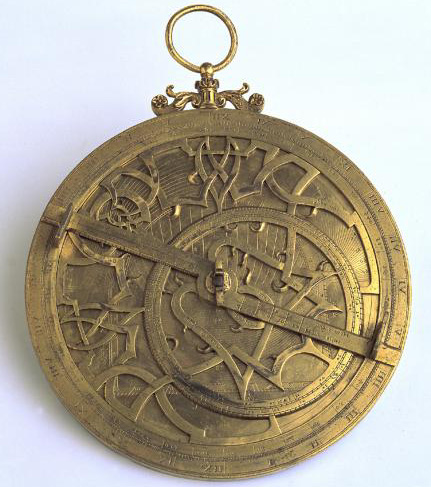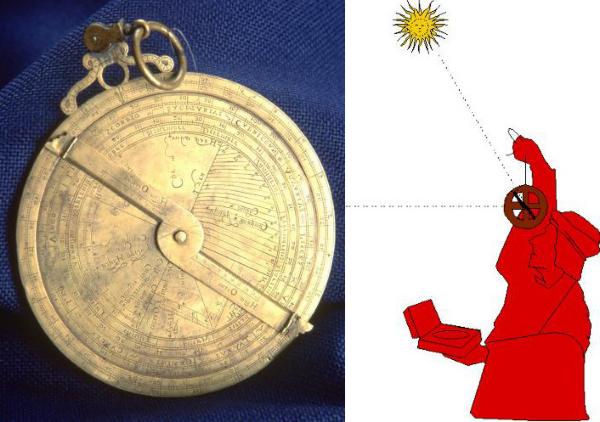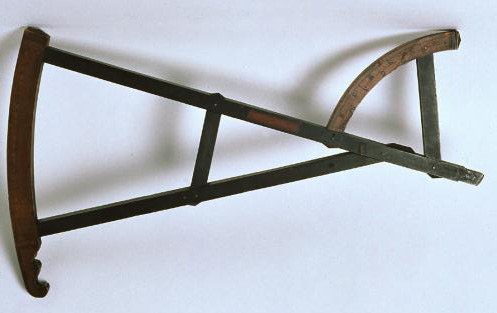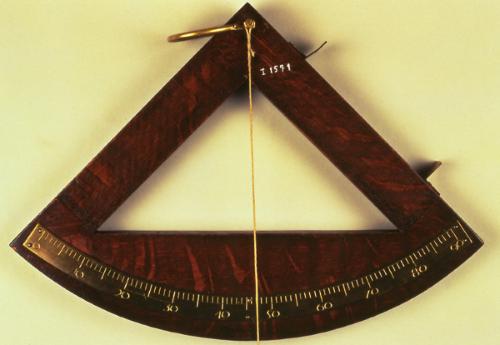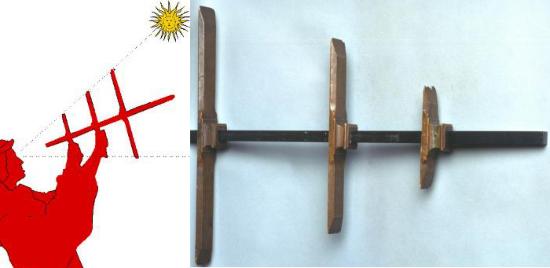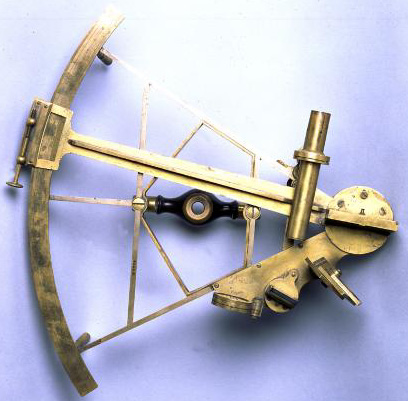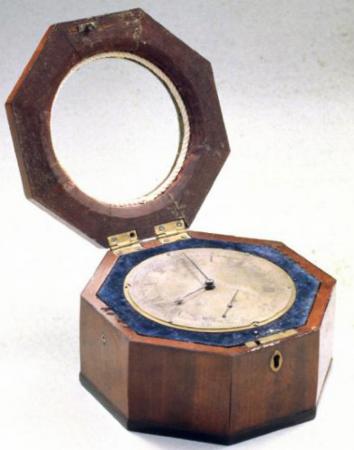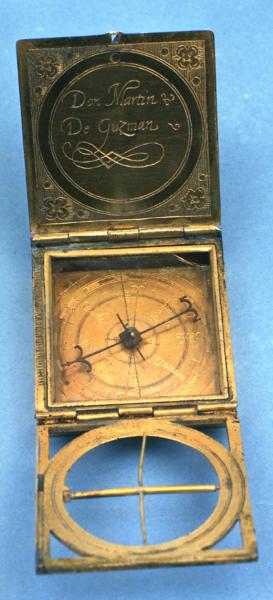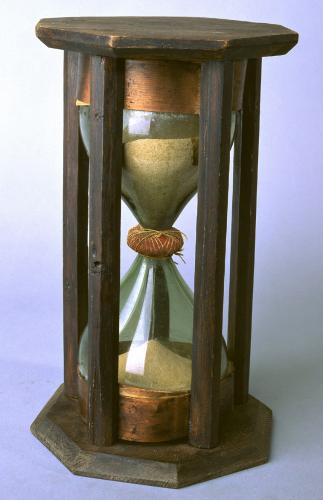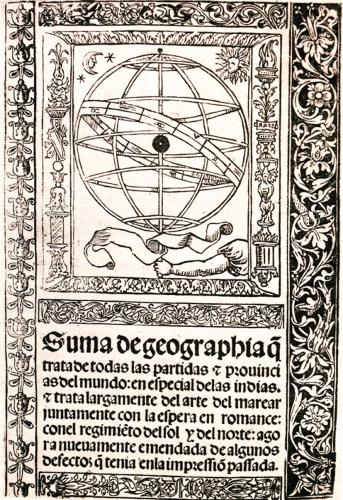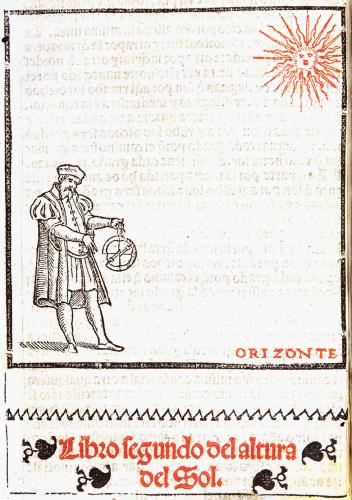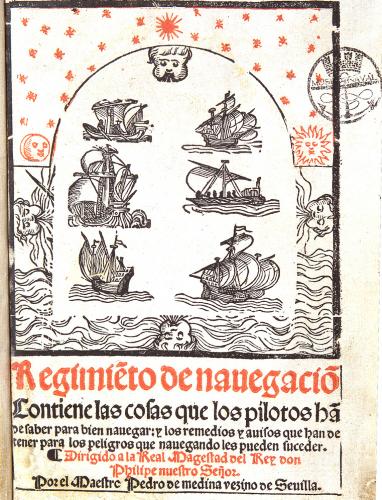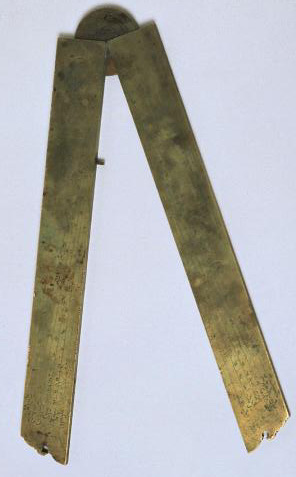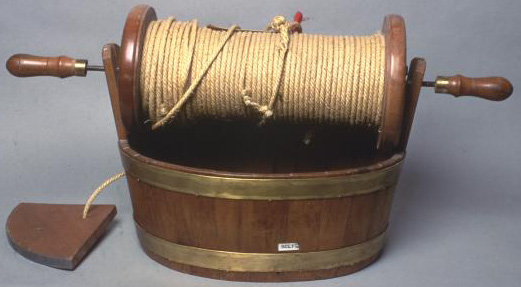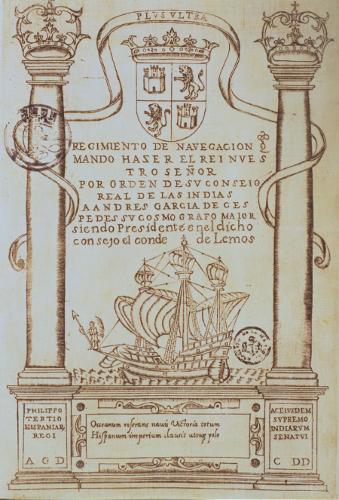 |
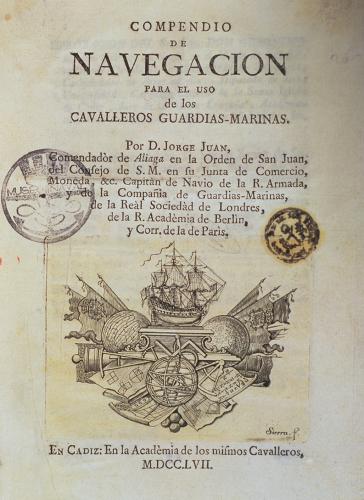 |
| Regimiento de navegación. Andrés García de Céspedes. Madrid, 1605. MN. Throughout the 16th and 17th centuries, it was the Spaniards and the Portuguese who systematically compiled, developed and expounded upon the theory and practice of navigation. The work of Céspedes corrected the errors of earlier treatises and this became one of the most important nautical treatises of the period. | Title page of the Compendio de navegación. Jorge Juan. Cádiz, 1757. MN. Jorge Juan, together with Ensenada, was the great pioneer of all initiatives undertaken in an effort to reorganize the Armada, and was one of the major exponents of science in Spain in the 18th century. Works such as this meant that the teaching of navigation techniques could undergo reform, and introduced into Spain the latest advances in science of the European Age of Enlightenment. |
